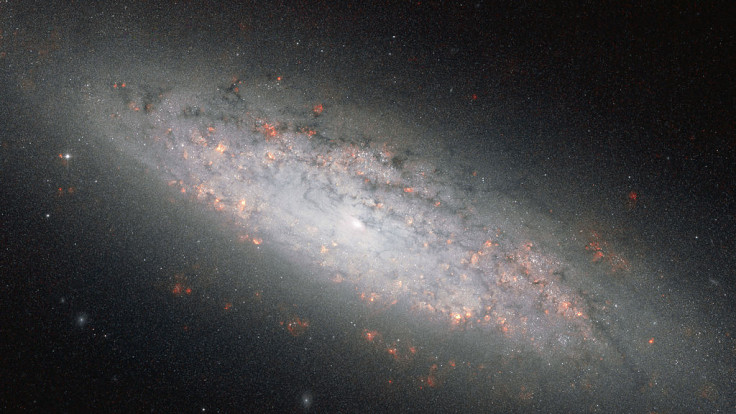Milky Way Formed Inside Out When Stars 'Lived Fast and Died Young'

Scientists have found further evidence supporting the theory that the Milky Way formed inside out, with stars in the inner regions forming first.
Data from the Gaia-ESO (European Southern Observatory) backs up the theory that our galaxy formed from the inside out because of the chemical composition of stars making up the Milky Way's disk.
The disk is a collection of giant gas clouds and billions of stars that give the galaxy its flying saucer shape.
After the Big Bang, the universe consisted almost entirely of hydrogen and helium, with other elements and metals growing over time.
Older stars formed when there were fewer elements, so have a lower metallicity. Gerry Gilmore, lead investigator on the Gaia-ESO Project, said: "The different chemical elements of which stars - and we - are made are created at different rates - some in massive stars which live fast and die young, and others in sun-like stars with more sedate multi-billion-year lifetimes."
Massive stars that die as core-collapsed supernovae, produce huge amounts of magnesium and can form black holes that trigger the formation of new stars. Findings showed that older stars inside the solar circle (the orbit of the sun around the centre of the Milky Way) have higher levels of magnesium.
Magnesium rich stars inside the solar circle suggest this area contained more stars that "lived fast and die young".
"This study provides exciting new evidence that the inner parts of the Milky Way's thick disc formed much more rapidly than did the thin disc stars, which dominate near our Solar neighbourhood."
Gerry Gilmore, lead investigator on the Gaia-ESO Project
Astronomers believe this shows that the outer regions of the Milky Way disk took much longer to form than those on the inside: "We have been able to shed new light on the timescale of chemical enrichment across the Milky Way disc, showing that outer regions of the disc take a much longer time to form," said Maria Bergemann from Cambridge's Institute of Astronomy.
"This supports theoretical models for the formation of disc galaxies in the context of Cold Dark Matter cosmology, which predict that galaxy discs grow inside-out."
The authors say their findings also shed light on the "double structure" of the Milky Way's disk, which suggests it has thin and thick disks.
Findings suggest stars in the thin disk are between zero and eight billion years old, while those in the thicker disk are aged over nine billion years.
Gilmore said: "This study provides exciting new evidence that the inner parts of the Milky Way's thick disc formed much more rapidly than did the thin disc stars, which dominate near our Solar neighbourhood."
Explaining the discs further, Aldo Serenelli, from the Institute of Space Sciences and co-author of the study, said: "The thin disc hosts spiral arms, young stars, giant molecular clouds – all objects which are young, at least in the context of the Galaxy. But astronomers have long suspected there is another disc, which is thicker, shorter and older. This thick disc hosts many old stars that have low metallicity."
Bergemann added: "From what we now know, the Galaxy is not an 'either-or' system. You can find stars of different ages and metal content everywhere. There is no clear separation between the thin and thick disc. The proportion of stars with different properties is not the same in both discs - that's how we know these two discs probably exist – but they could have very different origins."
© Copyright IBTimes 2025. All rights reserved.






















